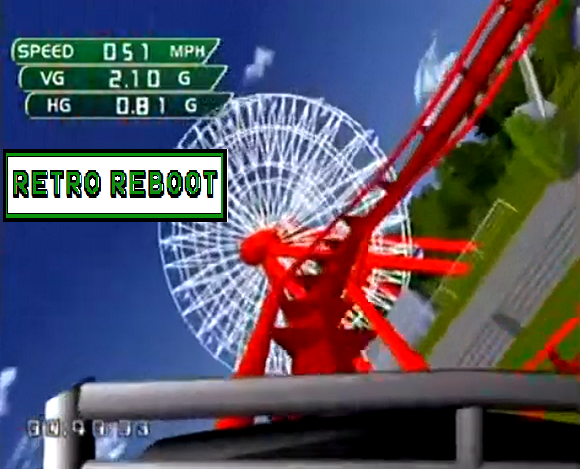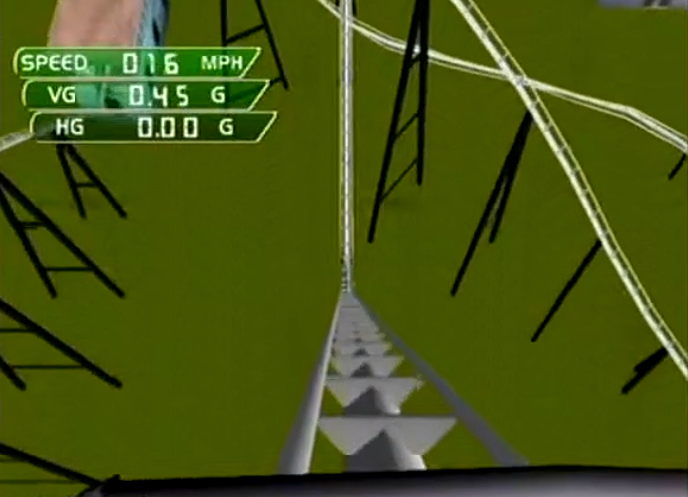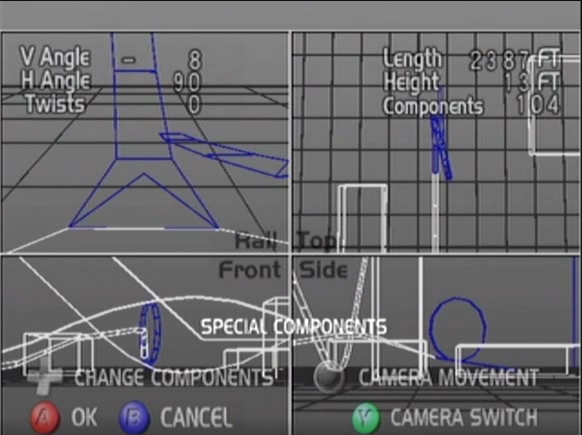RETRO REBOOT | Coaster Works (Sega Dreamcast)
A screamin' good builder simulator
RETRO REBOOT
Mike Lind
7/29/20254 min read


The Sega Dreamcast is a pretty cool console, and a hell of a bang for the brand to outon, when it comes to hardware. Bearing a more arcade feel during a period where the video game world was shifting for the more substantial home market, this beast was the last time the feeling of pumping quarters and having a good time for an hour or so would be paramount. I have a good number of favorites from the 'Cast, but one that gets a good ton of play from me is Coaster Works, a game that I think is a sleeper on this platform.
Developed by Bimboosoft and released in 1999, Coaster Works was known in Japan as Jet Coaster Dream (damn, that's a cool-ass name). It would see a release in the US in 2001, which was about the time the console was in its rapidly declining days. As a simulation builder, it places you in the position to create the ultimate rollercoaster, with an escalating series of challenges and prerequisites to meet. It's genuinely baffling how many hours I would pump into this game. in my very early content creation days, some of my first uploads were a handful of my creations.


when it comes to graphics, there honestly isn't that much to talk about. Coaster Works’ visuals may not push the power of the Dreamcast as much as some of the console’s more notable titles like Resident Evil: Code Veronica or Shenmue, and there may not be too much to look at prior to getting your ride up and running, but the smooth frame rate, speed, and rattling at which the coasters move from a POV perspective looks very authentic. BTW, I recommend playing this with a Dreamcast Rumble Pak to further augment the feel of riding a roller coaster.
80% of the game is just staring t grids, so it isn't going to be a visual powerhouse. It does lose some points in the presentation department, perhaps more could've been done to make that aspect more appealing.
Here's the first coaster I finished and uploaded a decade ago, The Dolphin.

I like the soundtrack quite a bit. While it may sound like the same elevator music on a constant loop, it’s serene enough to not completely distract you, it would actually sound like music heard on a local broadcasting hardware fix-it program. And HEY!!! You are playing a game about building things. Upon viewing your completed coaster, the presentation includes stock carnival music right out of a 1939 County Fair. When test running, the impact of the coaster can be gauged by the sound of what seems to be at least three or four squealing kids.
A bit of a drawback, in my humble opinion. For Test Runs, fine, but they couldn’t get twelve people of different ages to vocalize a couple of screams for your final product? I mean it’s a new roller coaster, are the same little cretins cutting in line all the time!? It certainly would’ve helped make your design feel like a big deal.


Truly the meat and potatoes behind Coaster Works, and one of the reasons why I think this game is so great. Each stage offers you some guidelines on what you need to do to make a successful roller coaster, but the design is entirely up to your discretion. No template to follow, the game doesn’t hold your hand for the first couple of levels or tells you to do anything specific. Your imagination is allowed to run wild!!
Now of course, your ride has to maintain a certain level of Gs to stay on track and there are safety precautions to follow in order to successfully build a ride, but nothing handcuffs your creativity. That’s all I ask for in gaming is the ability to flex your ingenuity. The four screens in the construction menu offer four views. A POV from the track perspective, an overhead shot, and left and right angles.
It could seem daunting at first, having as much free range immediately at the palm of your hands, and proceeding levels offer challenges like the ability to add loops and corkscrews, but this game is very user-friendly without sacrificing the technical aspects and physics. Patience is key and constant Test Runs are a must to gauge your progress, because if you get too far and complete the track and it comes up a dud (whether you failed safety regulations or the customers weren’t thrilled enough), backtracking can involve taking your entire coaster apart if pinpointing one or several trouble spots prove to be difficult. I think this is complete genius. Enough experimenting, and you can showcase the fruits of your hard work. Like so:

Coaster Works offers a completely different flavor of most video games available, even by today’s standards, it stands out for it attention to detail with the mechanics. I wonder if actual roller coaster designers were brought in as testers to double check the legitimacy of the speed and gravity. I really feel that the true enjoyment of Coaster Works depends on what you want to put into it. If it feels too much like homework, the learning curve can turn away, but I approach it like a cool high school science project and I really want to get a good grade. With only 5 actual stages and a bonus Dream Coaster extra stage (that abolishes the restrictions, so go to town!!), it may be pretty short and can be completed in one sitting. I think this game is wicked fun to tink around with and is still one of the most creative video games, not only for the Dreamcast, but ever.
